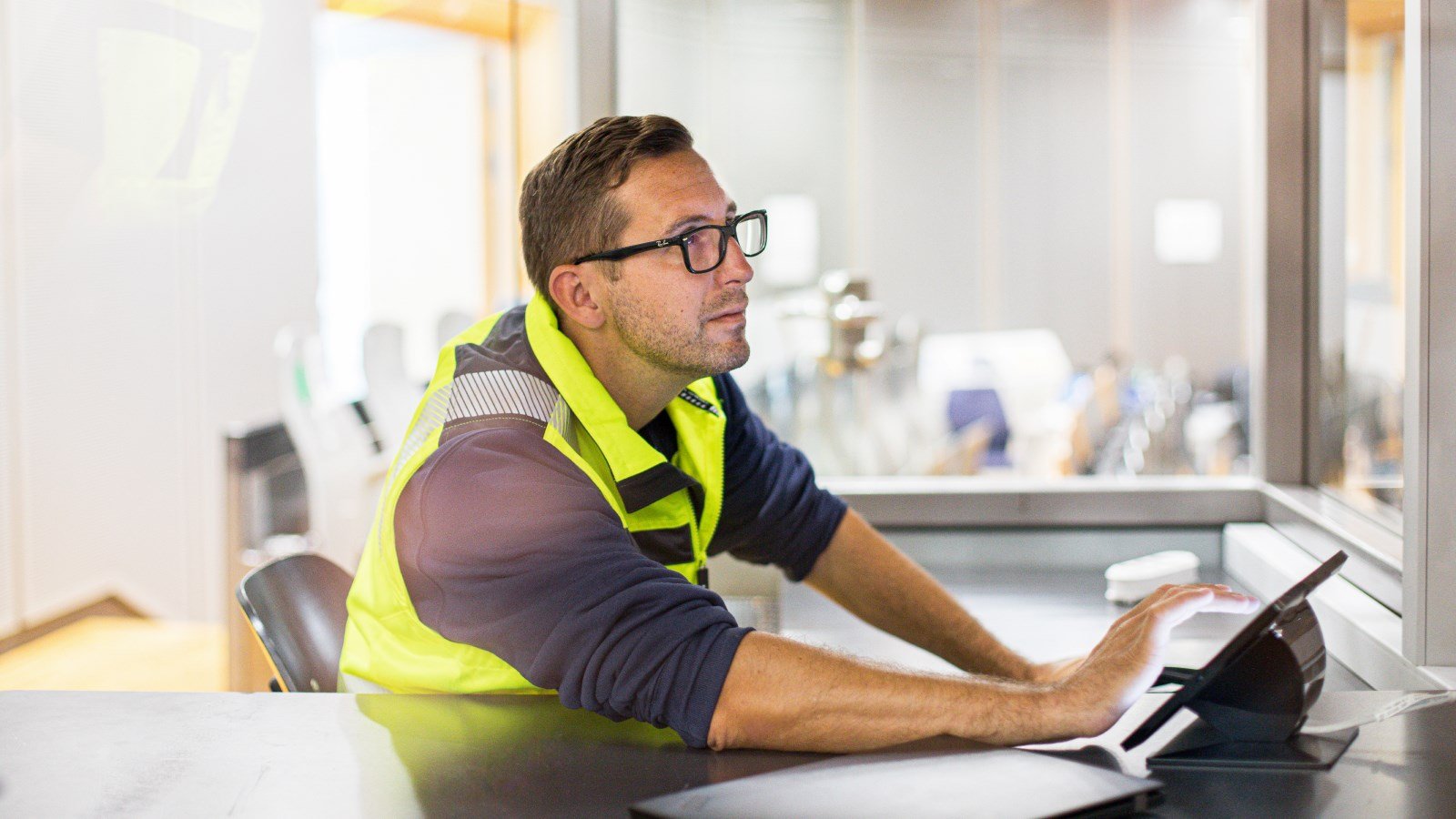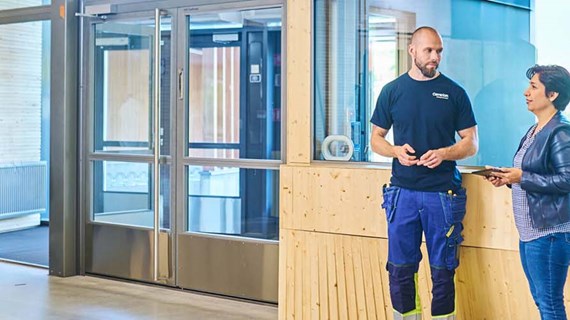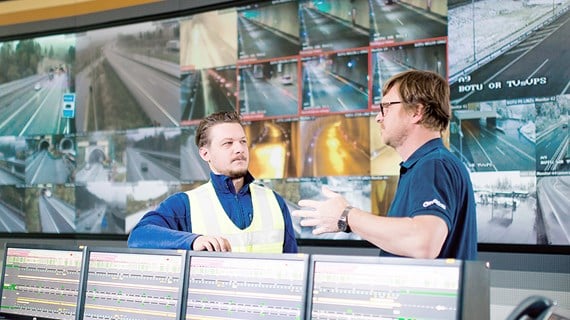
Smart building automation increases the value of your property – how and why?
Is your building automation system about to expire? Renewing building automation is not only a mandatory cost item, but also brings significant benefits. Learn why smart building automation is the cornerstone of modern property management and why investing in it is worthwhile.
Building automation works at its best like the property's brain: it monitors, regulates and controls the property's functions in an energy-efficient and secure manner, and according to the law. It allows you to manage your property's building systems centrally, so you can get the most out of them.
"
Building automation works at its best like the property's brain.
1. Building automation provides valuable data to the property owner
Data generated by building automation, such as reports, alerts and trend data, enable proactive maintenance and efficient property management. Data itself does not yet generate value, but modern building automation can analyse, enrich and harmonise it – that is, convert data collected from different sources into a compatible and uniform format. This will provide more comprehensive and visual reports that will help to understand the status of the property and the factors affecting it.
2. Modernisation brings savings
Managing property costs can often seem challenging, but modern automation helps property owners achieve significant savings. Smart automation can easily reduce energy costs by up to 10-30%. Saving significantly shortens the payback period of the investment in modernisation.
In old buildings, maintenance costs can be disproportionately high, as traditional systems usually do not have remote access. A maintenance technician may need to visit the building several times for the same issue, and unforeseen repair needs may increase costs even further.
"
Smart automation can easily reduce energy costs by up to 10-30%.
With modern building automation, maintenance needs can be identified and prioritised efficiently. A large part of problem situations can be managed remotely, in which case it is not necessary to send a service person to the site due to every fault.
- Preventive maintenance: Systems detect problems even before they escalate.
- Energy saving: Automatic control systems optimise energy consumption.
- Efficient resource management: Automated systems enable more efficient property management.
- Centralised monitoring: Systems managed from a single interface facilitate monitoring and enable quick response in case of problems.
- Longer device lifespan: Optimised and regular maintenance will extend the life of the devices and reduce their replacement needs.
3. Compatible systems make the property more efficient
Fragmented and incompatible systems bring their own challenges to property management. When the systems do not communicate with each other, the flow of information slows down, maintenance becomes more complicated and the security of the property may be compromised. The use of the property is more rigid when every aspect of building technology has to be adjusted separately, rather than functioning as logical entities.
Fragmented systems also make it difficult to anticipate and plan maintenance, as they do not necessarily provide real-time information on the condition of equipment. Modern building automation is based on interfaces that allow all the data of the property's technical systems to be collected together. Data is collected from the systems in real time, so it is easy to utilise.
4. Automation helps to reduce carbon footprint
Smart building automation helps to reduce the property's carbon footprint by optimising energy consumption and resource use. Motion and daylight sensors, as well as automatically adjustable heating and cooling systems, reduce unnecessary energy consumption. Proactive maintenance improves the energy efficiency of the equipment and extends its service life.
And there is more. Data analytics help identify energy-saving targets, and the energy consumption reports provided to property users encourage them to change their operations in a more energy-efficient direction. Modern automation also supports the use of renewable energy sources and the optimisation of storage, thereby reducing dependence on fossil fuels.
5. Design and expertise guarantee a successful building automation project
A successful building automation project requires careful planning that accurately defines the project objectives. Today, the design phase often aims to create an equal package for all service providers for competitive tendering, based on old and familiar technologies. In this case, it is difficult to implement new solutions.
"
The necessary functionalities are initially defined together with the users.
Both customers and service providers are better served by a model that does not define ready-made technical solutions at the design stage. Instead, the necessary functionalities are initially defined together with the users. Only after that, the technology that enables the functionalities is selected. This ensures that the best benefits are obtained from the new technologies and the design costs do not skyrocket when the design is done all at once carefully and well.
Building automation design requires extensive expertise from professionals in various fields, such as construction, electrical, HVAC and software engineers, telecommunications experts, cybersecurity experts, and project managers leading the project package. With the cooperation of these experts, building automation systems are designed, implemented and optimised in the best possible way.
As a conclusion, we can say that it is important to define the needed functionalities as carefully as possible and not to strictly limit the technology in order to make more advanced use of it.
6. Automation increases the value of the property
When well designed, building automation increases the value of the property. Reducing energy costs, improving user comfort, safety and fire systems connected to automation, lower maintenance costs, lower carbon footprint, meeting future requirements and continuous optimisation of operations make the property more attractive to both buyers and tenants.
At Caverion, we tailor an automation solution that best suits your property, which helps to increase the total value of the property in the long term and fits into your existing systems. We leverage technology and data efficiently from design to implementation and maintenance, and our multidisciplinary team will support you at every stage of the project – and beyond, throughout your property's lifecycle.
Got interested? Contact us and let's have a chat!
This blog article was originally published in Finnish on caverion.fi/blogi, few edits have been made into this translation.





